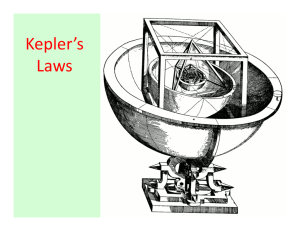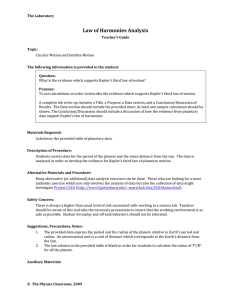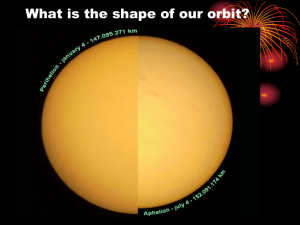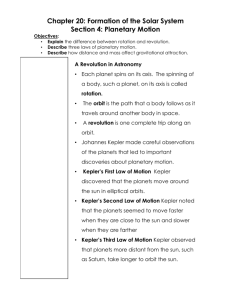Slides
advertisement
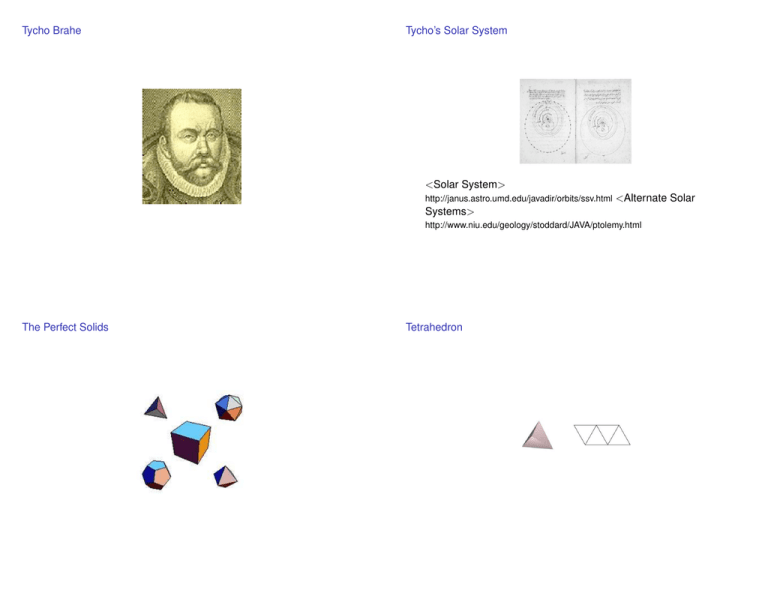
Tycho Brahe Tycho’s Solar System <Solar System> http://janus.astro.umd.edu/javadir/orbits/ssv.html <Alternate Solar Systems> http://www.niu.edu/geology/stoddard/JAVA/ptolemy.html The Perfect Solids Tetrahedron Cube Octahedron Dodecahedron Icosahedron The Solar System The Inner Solar System Kepler’s First Law Kepler’s First Law Planets travel around the sun in ellipses, with the sun at one focus Planets travel around the sun in ellipses, with the sun at one focus Kepler’s First Law Planets travel around the sun in ellipses, with the sun at one focus Kepler’s First Law Kepler’s First Law Planets travel around the sun in ellipses, with the sun at one focus Kepler’s First Law Planets travel around the sun in ellipses, with the sun at one focus Planets travel around the sun in ellipses, with the sun at one focus <Ellipse demo> http://csep10.phys.utk.edu/guidry/java/kepler/kepler.html <Ellipses of Actual Planets> http://www.walter-fendt.de/ph14e/keplerlaw1.htm Kepler’s Second Law Planets sweep out equal areas in equal times Kepler’s Third Law The square of the period of the orbit of a planet is proportional to the cube of the average radius of the orbit: <Second Law animation> (Period b)2 (Period a)2 = (Average radius a)3 (Average radius b)3 http://www.sunsite.ubc.ca/LivingMathematics/V001N01/UBCExamples/Kepler/kepler.html or Ta2 3 Ra = Tb2 3 Rb <Second Law and Actual Planets> http://www.walter-fendt.de/ph14e/keplerlaw2.htm Equivalent to angular momentum conservation (Newton found this) Galileo’s use of and inclined plane I up the plane – stops and rolls back I independent of angles I there must be an angle (0◦ ) for which there is no acceleration I <Kepler’s Laws with Data for Law 3> http://www.physicsclassroom.com/class/circles/u6l4a.cfm Math of Galilean mechanics I d = vt I in such a case the body continues to move at constant speed ⇒inertia I motion is parallel to earth’s surface, therefore circular I thus natural for objects to travel in circular orbits uniform velocity uniform acceleration (starting from 0 velocity) d= I 1 2 at 2 thrown object vs. dropped object . . .

